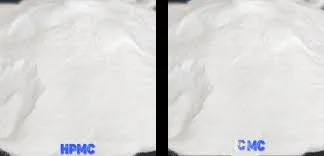
កក្កដា . 29, 2024 00:11 Back to list
Sustainable Approaches for HPMC Synthesis in Pharmaceutical Applications and Drug Delivery Systems
HPMC Synthesis An Overview of Hydroxypropyl Methylcellulose Production
Hydroxypropyl methylcellulose (HPMC) is a cellulose derivative widely utilized in various industries, particularly in pharmaceuticals, food, and construction. Its unique properties, such as high viscosity, thermal stability, and water retention, make it an indispensable ingredient in numerous applications, including drug formulations, food products, and construction materials. This article delves into the synthesis of HPMC, exploring the raw materials, processes, and factors influencing its production.
Raw Materials
The primary raw material for HPMC synthesis is cellulose, a natural polymer derived from plant cell walls. Cellulose is abundant and renewable, making it an environmentally friendly choice. To initiate the synthesis, cellulose is first treated with an alkalizing agent, typically sodium hydroxide (NaOH), to create alkali cellulose. This step is crucial as it enhances the reactivity of cellulose by breaking down its crystalline structure.
After treating cellulose with sodium hydroxide, the next step involves introducing hydroxypropyl and methyl groups to the cellulose backbone. Methyl chloride and propiolactone are commonly used for this purpose. The methylation process typically occurs through a reaction between alkali cellulose and methyl chloride, resulting in the substitution of hydroxyl groups with methyl groups. Simultaneously, the hydroxypropylation process occurs through the reaction of hydrated cellulose with propylene oxide or other hydroxypropylating agents, yielding hydroxypropyl groups.
Synthesis Process
The synthesis of HPMC can be divided into several stages preparation of alkali cellulose, methylation, hydroxypropylation, and purification.
1. Preparation of Alkali Cellulose This stage involves dissolving cellulose in an alkaline solution. The cellulose fibers are treated with a NaOH solution to obtain a homogeneous viscous solution. The degree of substitution (DS) in this stage determines the final properties of HPMC.
hpmc synthesis

2. Methylation In the methylation stage, the alkali cellulose reacts with methyl chloride. The reaction is usually conducted under controlled temperature and pressure to ensure the appropriate DS is obtained. The selection of temperature and the ratio of reactants is critical, as it influences the degree of substitution and the viscosity of the final product.
3. Hydroxypropylation In this crucial step, the alkali cellulose undergoes hydroxypropylation. Propylene oxide is used to introduce hydroxypropyl groups into the modified cellulose chain. The hydroxypropylation process also requires precise control of reaction conditions to achieve the desired properties for various applications.
4. Purification After methylation and hydroxypropylation, the product is usually a viscous gel. This gel is then purified to remove unreacted chemicals and byproducts, typically through precipitation in ethanol or another solvent, followed by drying to obtain a fine powder of HPMC.
Factors Influencing HPMC Properties
Several factors influence the properties of HPMC, including the degree of substitution, the molecular weight of cellulose used, and the reaction conditions during synthesis.
- Degree of Substitution (DS) The DS affects the solubility, viscosity, and film-forming ability of HPMC. A higher DS leads to improved solubility in water, which is desirable for many applications. - Molecular Weight The molecular weight of the cellulose affects the polymer’s viscosity and functionality. Higher molecular weight cellulose typically results in a thicker gel.
- Reaction Conditions Temperature, pH, and the concentration of reactants all play a significant role in determining the final characteristics of HPMC.
In conclusion, the synthesis of hydroxypropyl methylcellulose is a complex process that involves careful control of various parameters to achieve the desired properties. As a versatile compound, HPMC continues to be an essential component across multiple industries, aiding in the development of innovative products that meet contemporary needs. Its eco-friendly nature and diverse applications make HPMC a focal point in ongoing research and development in material science.
-
The Widespread Application of Redispersible Powder in Construction and Building Materials
NewsMay.16,2025
-
The Widespread Application of Hpmc in the Detergent Industry
NewsMay.16,2025
-
The Main Applications of Hydroxyethyl Cellulose in Paints and Coatings
NewsMay.16,2025
-
Mortar Bonding Agent: the Key to Enhancing the Adhesion Between New and Old Mortar Layers and Between Mortar and Different Substrates
NewsMay.16,2025
-
HPMC: Application as a thickener and excipient
NewsMay.16,2025
-
Hec Cellulose Cellulose: Multi functional dispersants and high-efficiency thickeners
NewsMay.16,2025







